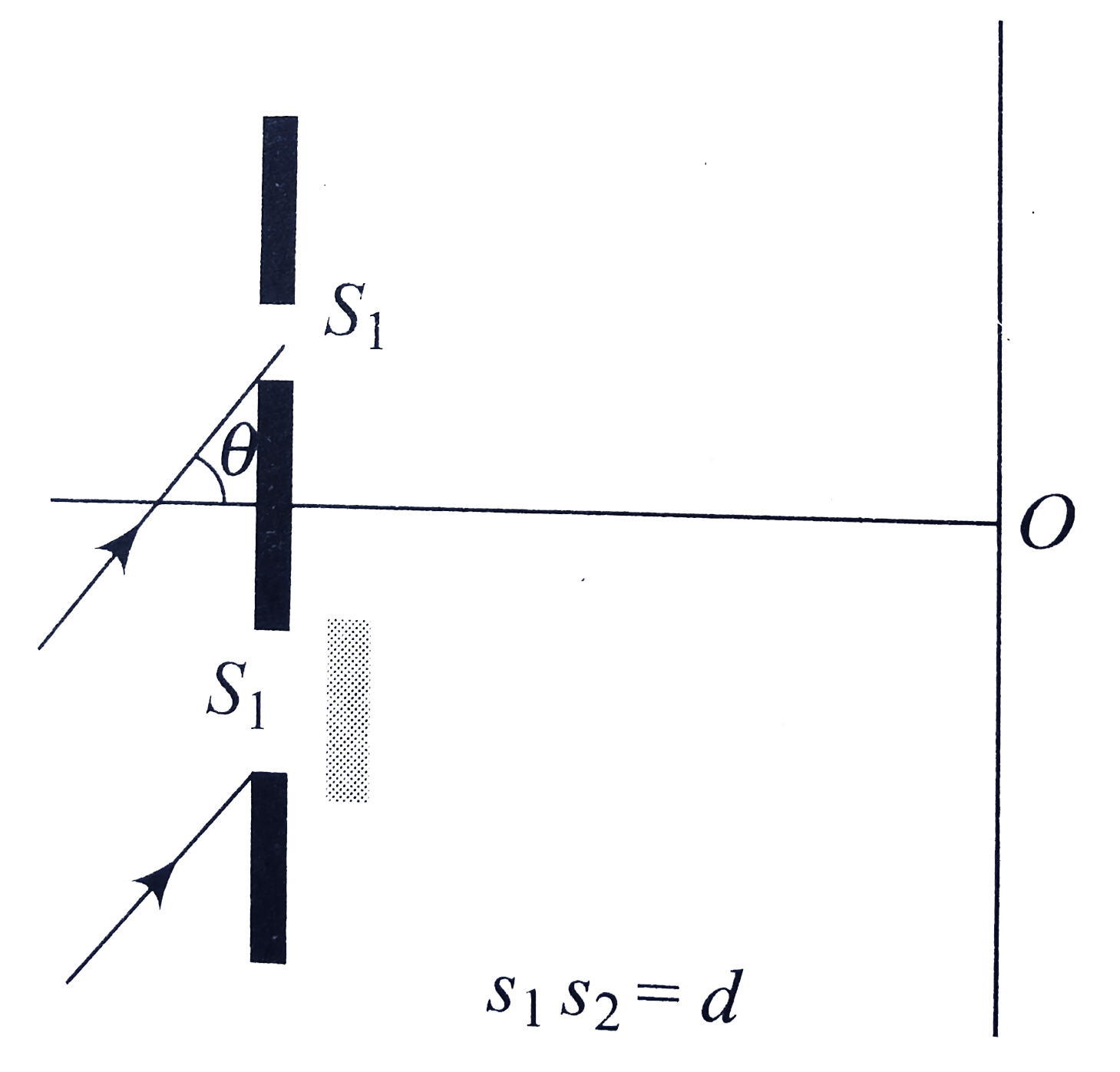A monochromatic beam of light falls on Young's double slit experiment apparatus as shown in figure. A thin sheet of glass is inserted in front of lower slit S2(λ=600nm is wavelength of source)

If central bright fringe is obtained on screen at 'O' then
(μ−1)t=dsinθ
(μ−1)t=dcosθ
(μt)=dθ
t(μ−1)=dsinθ
The correct Answer is:A
Totla path difference Δx=(μ−1)t−dsinθ. For central maxima Δx=0 hence (μ−1)t=dsinθ
Topper's Solved these Questions
- BOOK - NARAYNACHAPTER - WAVE OPTICSEXERCISE - LEVEL - VI40videos
WAVE OPTICS
- BOOK - NARAYNACHAPTER - WAVE OPTICSEXERCISE - LEVEL - I(H.W)20videos
WAVE OPTICS
- BOOK - NARAYNACHAPTER - WAVE OPTICSEXERCISE - NCERT Based Questions25videos
WAVE OPTICS
- BOOK - NARAYNACHAPTER - SEMICONDUCTOR ELECTRONICSEXERCISE - ADDITIONAL EXERCISE (ASSERTION AND REASON TYPE QUESTIONS :)19videos
SEMICONDUCTOR ELECTRONICS
Similar Questions
Knowledge Check
- Question 1 - Select One
A monochromatic beam of light falls on Young's double slit experiment apparatus as shown in figure. A thin sheet of glass is inserted in front of lower slit S2(λ=600nm is wavelength of source)

The phase difference between central masxima and 5th minima isAπ6B9πC3π2D8π±π6 - Question 2 - Select One
A monochromatic beam of light fall on YDSE apparatus at some angle (say θ) as shown in figure. A thin sheet of glass is inserted in front of the lower slit s2. The central bright fringe (path difference =0) will be obtained
 Aat OBabove OCbelow ODanywhere depending on angle θ, thickenss of plate t, and refractive index of glass μ
Aat OBabove OCbelow ODanywhere depending on angle θ, thickenss of plate t, and refractive index of glass μ - Question 3 - Select One
Young's double slit experiment is performed with monochromatic light. A thin film is introduced in front of one of the slits
AIntensity at the position of central maxima must decreaseBIntensity at the position of central maxima may increaseCCentral maxima may remain unshiftedDIntensity at position of first maxima may decreases
In the Young's double slit experiment apparatus shown in figure, the ratio of maximum to minimum intensity on the screen is 9. The wavelength of light used is λ, then the value of y is
 View Solution
View SolutionA Young's double slit experiment uses a monochromatic source. The shape of the interference fringes formed on a screen is
View SolutionUsing monochromatic light of wavelength λ in Young's double slit experiment, the eleventh dark fringe is obtained on the screen for a phase difference of _____.
View SolutionIn a Young's double slit experiment, 12 fringes are observed to be formed in a certain segment of the screen when light of wavelength 600nm is used. If the wavelength of light is changed to 400nm, number of fringes observed in the same segment of the screen is given by
View SolutionA thin transparent sheet is placed in front of a slit in Young's double slit experiment. The fringe width will
View Solution
